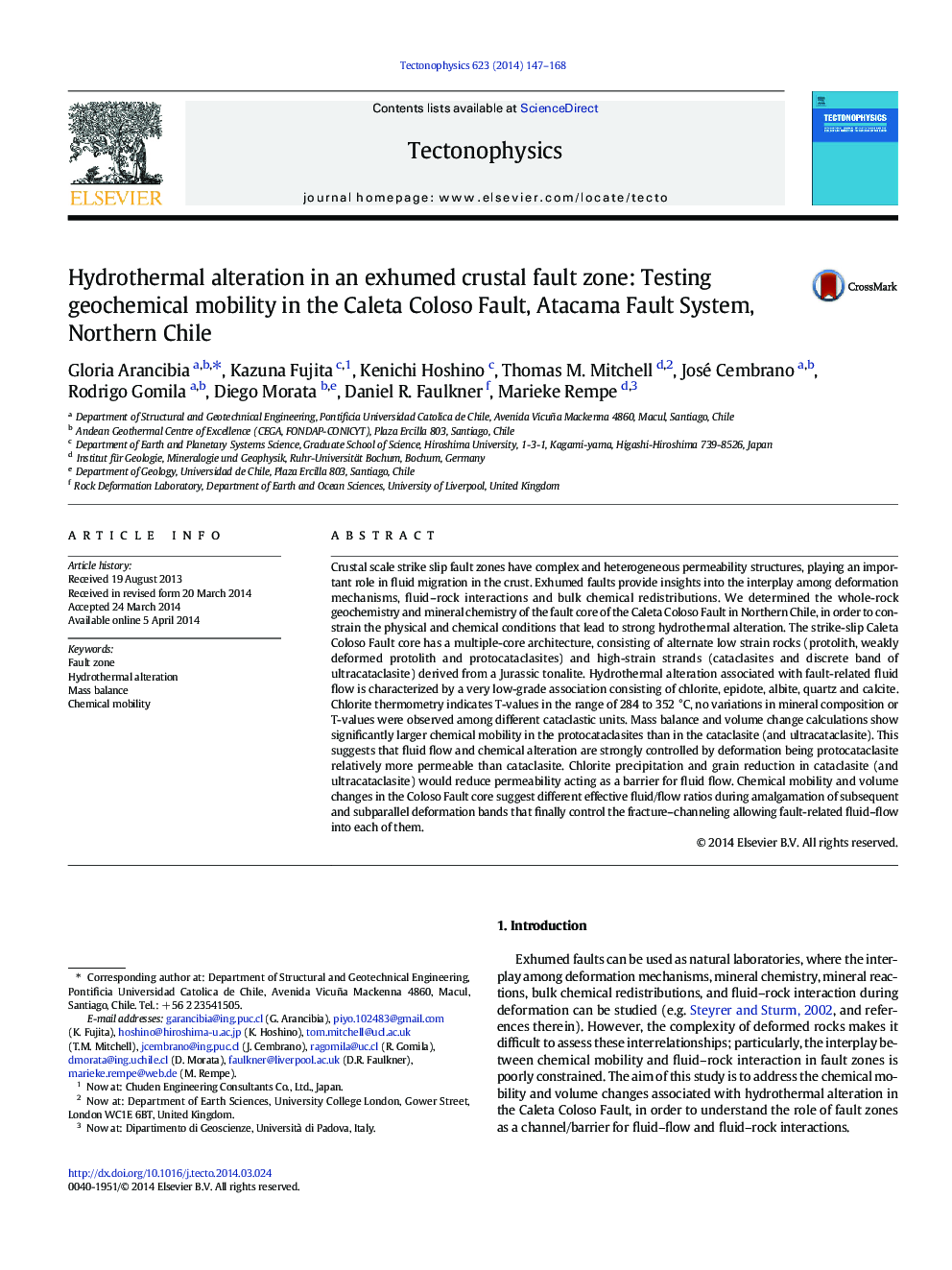| کد مقاله | کد نشریه | سال انتشار | مقاله انگلیسی | نسخه تمام متن |
|---|---|---|---|---|
| 4691989 | 1636767 | 2014 | 22 صفحه PDF | دانلود رایگان |

• We examine internal architecture of an ancient brittle fault zone in Northern Chile.
• Fault zone consists of a multiple core of high/low strain cataclastic rocks.
• Fault-related fluid flow is characterized by a very low-grade mineral association.
• Chemical mass balance and volume change calculations were documented.
• Major chemical mobility occurred in the highest permeable rocks.
Crustal scale strike slip fault zones have complex and heterogeneous permeability structures, playing an important role in fluid migration in the crust. Exhumed faults provide insights into the interplay among deformation mechanisms, fluid–rock interactions and bulk chemical redistributions. We determined the whole-rock geochemistry and mineral chemistry of the fault core of the Caleta Coloso Fault in Northern Chile, in order to constrain the physical and chemical conditions that lead to strong hydrothermal alteration. The strike-slip Caleta Coloso Fault core has a multiple-core architecture, consisting of alternate low strain rocks (protolith, weakly deformed protolith and protocataclasites) and high-strain strands (cataclasites and discrete band of ultracataclasite) derived from a Jurassic tonalite. Hydrothermal alteration associated with fault-related fluid flow is characterized by a very low-grade association consisting of chlorite, epidote, albite, quartz and calcite. Chlorite thermometry indicates T-values in the range of 284 to 352 °C, no variations in mineral composition or T-values were observed among different cataclastic units. Mass balance and volume change calculations show significantly larger chemical mobility in the protocataclasites than in the cataclasite (and ultracataclasite). This suggests that fluid flow and chemical alteration are strongly controlled by deformation being protocataclasite relatively more permeable than cataclasite. Chlorite precipitation and grain reduction in cataclasite (and ultracataclasite) would reduce permeability acting as a barrier for fluid flow. Chemical mobility and volume changes in the Coloso Fault core suggest different effective fluid/flow ratios during amalgamation of subsequent and subparallel deformation bands that finally control the fracture–channeling allowing fault-related fluid–flow into each of them.
Journal: Tectonophysics - Volume 623, 2 June 2014, Pages 147–168